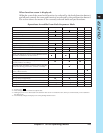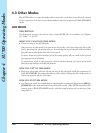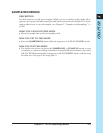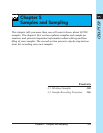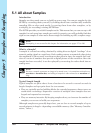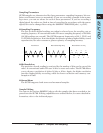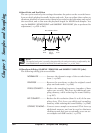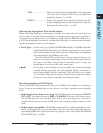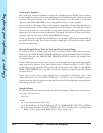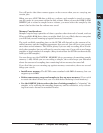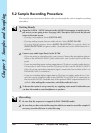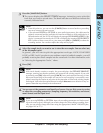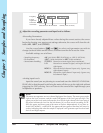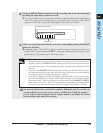
Chapter 5 Samples and Sampling 153
CHAPTER 5
TRIM............................ Delete waveform data existing before the start point
and after the end point. This frees up additional
sampling memory. (→ p.262)
DELETE.......................Deletes the sample from memory, freeing up addi-
tional sampling memory. Also deletes any sequence
data stored on the track. (→ p.271)
Selecting the Appropriate Track for the Sample
When recording, loading, or importing a sample, you must select the track that you
want to place it on. Placing the sample on an inappropriate track is not a critical er-
ror, since you can always move it to a different track using the TRACK | COPY job (→
p.135). But ultimately you need to consider the following two issues when determin-
ing the destination track for each sample.
●
Track Type: Each track type (LOOP, COMPOSED LOOP, and FREE) handles
sample playback differently, as explained on page 236. You want to
place each sample on the track type that will produce the playback
style appropriate for building your song.
Note also that LOOP tracks cannot accept samples that are too
short or too long for generating a loop. (See the next section below.)
If you are recording a sample that is unusually short or long, you
should place it on one of the other track types.
●
Bank: If you plan to use realtime control to adjust the sound of multiple
samples during song play, you will probably find it convenient to
place these samples into the same bank. This will allow you to make
your realtime adjustments using only the knobs and pads, without
having to worry about constantly switching the bank.
Recording Samples on LOOP Tracks
Since the SU700 will automatically play your LOOP-track samples as continuous
loops, it rejects recordings that are too short or too long to generate an acceptable
loop.
• If the length is too short or too long: The SU700 displays the message CANNOT
FIND LOOP. You must then press [OK] or [CANCEL] to return to the main screen.
The SU700 discards the recorded data. If you were attempting to overwrite a
sample already present on the LOOP track, that existing sample remains on the
track.
• If the length is acceptable: The SU700 automatically sets the loop length for you,
based on the length of your recorded input. You can view the loop length and cor-
responding BPM value (and adjust the loop length, if you wish) using the TRACK
SET | SETUP job (→ p.236).



